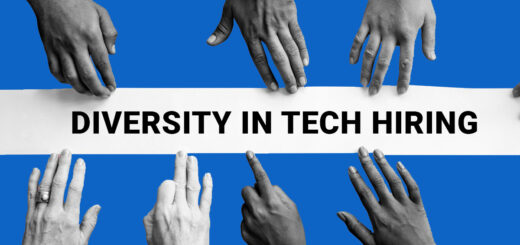What is Hiring Bias and How Can You Eliminate It?

Overview
Every firm wants to recruit high-performing teams and a diverse workforce. Therefore, every company should aim to eliminate bias in hiring. Bias occurs when the lead recruiter prefers one candidate over another, which can lead to an irrational choice that may jeopardize the company’s retention efforts and desire to diversify the workplace.
Unconscious bias will reduce the firm’s chances of remaining competitive in the job market. The firm will face various challenges in maintaining the work processes if it keeps rejecting ideal candidates based on some bias. It is essential to eliminate hiring bias to guarantee that you are filling positions with suitable candidates.
What is Hiring Bias?
Hiring biases are arbitrary assumptions by the recruiters about the candidate based on first impressions solely that affect the hiring decision. The recruiter may prefer and support a candidate or feel and act negatively against them based on these views, which can be both favorable and unfavorable.
Many companies and Human Resource professionals face the challenge of hiring bias. Companies constantly strive to hire the most competent candidates. However, hiring involves more than just looking for candidates that meet all the requirements listed in the job descriptions.
What is the Challenge with Hiring Bias in the Hiring Process?
According to research, recruiters are more likely to make poor hiring decisions if they allow their biases to affect their judgment. Even worse, recruiters can unintentionally decide against hiring people who could help them diversify their workforce or have more to offer.
When recruiters hire a more diverse and creative workforce, the company is much more effective at addressing problems and becoming a benchmark of success. On the other hand, according to Harvard Business Review, poor recruiting decisions may cost companies up to 400% of an annual wage and as much as 80% of employee turnover, in addition to negatively influencing the performance of the entire team.
What are Some Common Hiring Biases?
Here are the common hiring biases in the workplace:
- Confirmation Bias: Confirmation bias is linked to prejudice and stereotypes. It describes the employer’s thought process when they already have an opinion about a candidate and seeks data to support that judgment.
- Affinity Bias: Affinity bias, often referred to as similarity bias, is the unconscious tendency to get along well with others who display similar traits as the hiring party. Employers frequently give better ratings to candidates with similar backgrounds in interviews and subjective evaluations.
- Beauty Bias: Beauty bias indicates a solid instinct to support or hire candidates who adhere to the standards of beauty established by society.
- Horns Effect: The horns effect is when a single unfavorable characteristic significantly impacts how the recruiter sees that particular candidate.
- Conformity Bias: The influence of peer pressure on hiring decisions results in conformity bias. This can occur in assessment centers and group interviews when the assessors allow other people’s perspectives and opinions about an applicant to affect their conclusions.
- Halo Effect: The Halo effect arises during the recruiting process when a favorable opinion of one aspect of an applicant clouds the judgment of their overall qualifications.
- Gender Bias: Stereotypes are fundamental in the tendency to prefer one gender over another, known as gender bias. Despite the advancements achieved and the changes in society, there are still misconceptions regarding “feminine” and “masculine” professions.
- Overconfidence Bias: Overconfidence bias describes a recruiter’s propensity to have excessive confidence in a candidate’s abilities.
Ways to Reduce Bias in the Hiring Process
- Implement a Structured Interviewing Process: By allowing companies to “concentrate on the elements that have a direct influence on performance, structured interviews, in which every candidate is given the same set of predetermined questions, standardize the interview process and reduce bias.”
- Recognize the Existence of Implicit Bias: Many hiring managers and recruiters have found not forgetting to pause for a moment to be effective. It’s crucial to set aside time to consider the objectives of hiring for a particular position, review the job descriptions, and consider why you leave an interview with favorable or wrong impressions.
- Standardize the Recruitment Process: Standardized hiring procedures help eliminate bias, and standardizing all hiring and recruitment processes, including developing job descriptions and surveys, gives candidates an equal chance to make a good impression.
- Talk to Your Peers: Speaking with peers can improve the accuracy of your evaluation. If you have questions or want to make a more well-informed decision about a candidate, feel free to approach your colleagues for assistance. You may detect ignored aspects throughout the interview process and gain a new perspective by consulting with others.
- Outsource the technical interviews: You can outsource interviews for technical recruitment by opting for platforms like HireHunch, which helps to reduce hiring bias. HireHunch provides reliable technical interviewing services with expert interviewers who conduct an initial round of interviews to assess the skills of the candidates. HireHunch assists businesses in evaluating candidates without any bias.
What are AI Hiring Biases?
Due to the technology’s use of a vast amount of data to evaluate applicants, Artificial Intelligence (AI) is frequently credited with reducing hiring bias. The best applicant for a position is predicted by AI utilizing its algorithm, which incorporates several data sources. The human brain cannot process such a tremendous amount of information. The data points are evaluated objectively by AI, which also reduces human biases, mental tiredness, and biases.
Here are some of the most effective strategies for businesses to reduce AI bias in hiring and recruitment procedures.
- Keep everyone informed
- Place a focus on protected groups
- Measure success.
- Delete any biased data components
What is Unconscious Bias?
Unconscious biases are also known as implicit biases, beliefs and assumptions that people hold about particular racial or ethnic groups but aren’t consciously aware of it. These biases may occur toward individuals of different races, ethnic groups, gender identities, and more.
Ways to Reduce Unconscious Bias
- Become More Self-aware: Notice your initial thoughts and responses to others. Challenge your biases and judgements.
- Make Informed Decisions: Take a step back before acting since unintentional bias is more likely to occur when you react quickly or impulsively.
- Acceptance and Awareness: Unconscious biases are a natural aspect of being human. You may lessen how prejudices manifest in your relationships with others by becoming aware of them.
- Establish Behavior Guidelines: Don’t put up with interruptions in your team, and ensure that everyone is given a fair chance to speak and be heard.
- Expand Your Social Network: Social networking enables you to increase your cultural competency and learn more about different people. Concentrate on the traits you have in common with other people while simultaneously acknowledging and making an effort to understand your differences.
The Difference between Conscious and Unconscious Bias
The primary distinction between these two types of biases is that conscious bias is usually based on a biased approach you are aware of. In contrast, unconscious bias is the biased viewpoint that functions outside your awareness and control.
Conclusion
For organizations to succeed in today’s highly competitive environment, it is crucial to hire the best talent. You should focus on the relevant data exclusively if your hiring decisions are independent of the threat of prejudice. In this manner, you can hire the best candidates to join your workforce. Organizations must conduct ongoing training on bias and promote workplace diversity integration to eliminate bias in hiring decisions.
FAQs
Q1) How do you eliminate bias in the hiring process?
You can eliminate bias within the hiring process in the following ways :
- Make everyone answerable
- Set new and better diversity goals
- Change job descriptions
- Create a thorough job description and educate your team
Q2) What does hiring bias mean?
When different criteria are applied to various candidates throughout the hiring process, prejudice or discrimination against a specific person or group results in a hiring bias.
Q3) How do you eliminate bias through AI (Artificial Intelligence)?
Automation of the hiring process is made possible by the use of artificial intelligence (AI). Recent developments in the field, including improvements in big data and machine learning, enable AI to hire, background check, and even forecast the suitability and success rate of candidates.
Q4) What is bias, and how can it be reduced during the interview?
Bias is a strong preference for or against one person or group of people. To reduce bias in hiring and guarantee a level of uniformity among interviews, use the same set of interview questions for each candidate. Short, direct, and focused questions are preferable.



